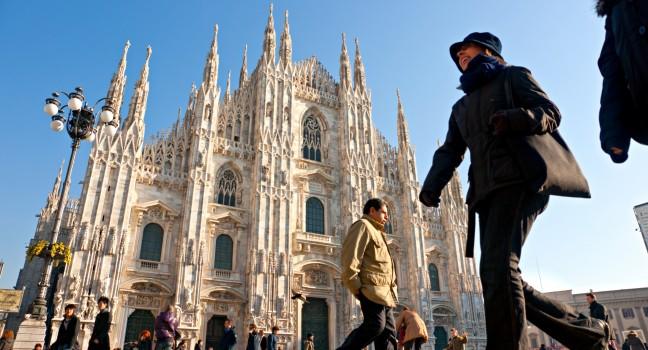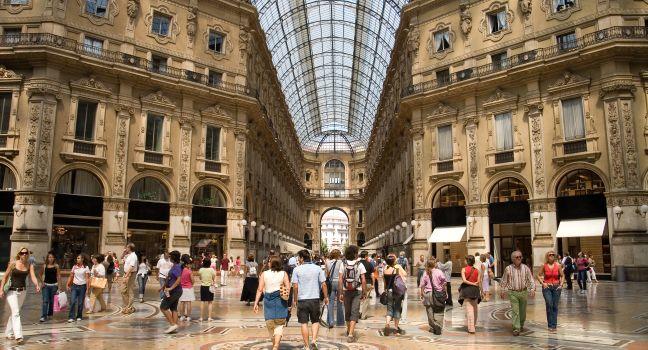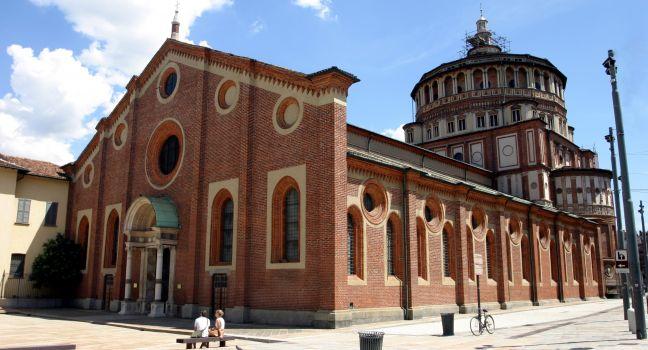Duomo

There is no denying that for sheer size and complexity, the Duomo is unrivaled in Italy. It is the second-largest church in the country—the largest being St. Peter's in Rome. This intricate Gothic structure has been fascinating and exasperating visitors and conquerors alike since it was begun by Gian Galeazzo Visconti III (1351–1402), first duke of Milan, in 1386. Consecrated in the 15th or 16th century, it was not completed until just before the coronation of Napoléon as king of Italy in 1809.
The building is adorned with 135 marble spires and 2,245 marble statues. The Duomo's most famous sculpture is the gruesome but anatomically instructive figure of San Bartolomeo (St. Bartholomew), who was flayed alive. As you enter the apse to admire those splendid windows, glance at the sacristy doors to the right and left of the altar. The lunette on the right dates from 1393 and was decorated by Hans von Fernach.





